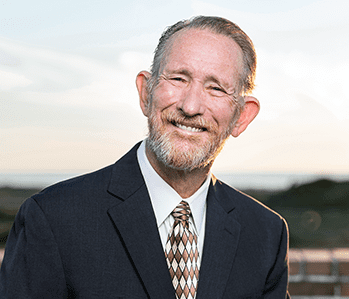
The purpose of this blog is to stimulate thought and discussion about important issues in healthcare. Opinions expressed are those of the author and do not necessarily express the views of CMDA. We encourage you to join the conversation on our website and share your experience, insight and expertise. CMDA has a rigorous and representative process in formulating official positions, which are largely limited to bioethical areas.
App Blogs
The Slippery Slope and Inevitability
October 13, 2022
by Robert E. Cranston, MD, MA (Ethics)
According to Merriam Wester, the definition of “slippery slope” is “a course of action that seems to lead inevitably from one action or result to another with unintended consequences.” This can be further subdivided into causal and judgmental categories in which, respectively, a) a given action will lead in predictable steps from A to B to C to a bad outcome, or b) that if a given choice is made it will allow for other more ominous outcomes.
While one can quickly think of real-life examples of both of these, the concept has at times been referred to as the slippery slope fallacy, because the actual likelihood of the fall down the slope, particularly when it may require a number of small steps, is unknown and can only be conjectured. Additionally, an assumption is made that nothing possibly can stop the progression of the process once it is initiated. There is truth in the truism, but only if we abandon our responsibility to disrupt the downward spiral.
To preemptively thwart the slippery slope argument in particular cases, the proponents of a proposed action frequently state that with the appropriate controls in place, any negative progression is proactively prevented; thus, dire outcomes will never occur. However, as Yogi Berra said, “It’s tough to make predictions, especially about the future.” Or, as my friend Denis Black has reminded me, “The one certain law in politics is the law of unintended consequences.”
Assisted suicide, now euphemistically labeled “Medical Aid in Dying” (MAiD) is a classic example. (Assisted suicide, by definition, assumes the patient will participate in the process. In some laws now, though, true euthanasia—performed solely by others—is subsumed under the label of assisted suicide, confusing the picture.) When first introduced in various places throughout the Western world, numerous safeguards were proposed. Assisted suicide would:
- Only be available for patients with diagnosed fatal illnesses,
- Only be available for patients with less than six months to live,
- Only be available after full psychological assessment,
- Only be available to patients with full decisional capacity,
- Only be provided by physicians,
- Require approval of two separate physicians,
- Only apply to patients after waiting periods and repeated patient requests,
- Be available primarily for patients with intractable pain,
- Only be available for adults, and
- Only be performed with full documentation and follow-up of outcomes.
Over time, each of these safeguards have been ignored or legally eliminated, and the process is still ongoing.
Assisted suicide, or its balder cousin euthanasia, is now legal in Belgium, Canada, Colombia, Luxembourg, Netherlands, New Zealand, several states in Australia and a growing number of states in the U.S. Canada, our neighbor to the north, has some of the most aggressively permissive assisted suicide laws. For instance:
- Canada now allows nurse practitioners, in addition to physicians, to administer death.
- It requires no family notification.
- It is actively deploying euthanasia as a general cost-saving measure.
- Some ethics committees, nurses and physicians are being encouraged to make sure their seriously ill patients realize this is a legal option for them and a “valid” treatment choice.
- Disability rights advocates are becoming increasingly alarmed that assisted suicide and euthanasia are being offered on a discriminatory basis to disabled and at times uncomprehending patients.
- Patients are not required by law to be terminally ill.
- In several provinces, physicians are specifically instructed to not indicate that euthanasia was the cause of death—essentially mandating that physicians perjure themselves on permanent medical legal documents to protect the continued process of euthanasia in Canada,
- It is currently seriously considering expanding availability to “mature minors.”
Despite the originally stated, possibly good, intentions of making euthanasia rare and applicable only in extreme situations, it is apparent it has progressed to become much more widely available and widely employed. Gratefully, the slippery slope argument’s inherent fallacy is that, only if left to itself, will the downward, life-denying process continue. We can intervene. We can turn back the tide.
For 50 years, no one thought abortion on demand could or would ever be reined in in the United States. Yet, just this summer, this invented “constitutional right” was overturned. We now have a large continuing battle on our hands where, on a state-by-state basis, more stringent limitations on abortion may be enacted into law. Though the struggle will likely go on for years, this is already happening in many states.
It is not inevitable that the U.S. will follow the example of Canada or European nations in their headlong pursuit of ever-loosening euthanasia regulations. Even as bad laws and judicial decisions are enacted, they can be challenged and overturned. Dred Scott v. Sandford, Plessy v. Ferguson and Brown v. Board of Education, all blatantly racist U.S. Supreme Court decisions have subsequently been rejected. Roe v. Wade, along with the above, are prime examples of Supreme Court decisions that were inherently wrong and eventually overturned. We can pray for our judges and judicial watchdogs such as Alliance Defending Freedom and others. When we have opportunity to do so, we can vote for judges with proven pro-life (at all stages) track records or for politicians who will be in positions to appoint such judges. While God is not calling each of us into political office or political action, we can still be politically aware, and we can support candidates who we believe will support life at all stages.
Other powerful ways we can stand for human rights and protect human dignity in regard to assisted suicide is by supporting local hospices who work to care for persons with irreversible illnesses, volunteering our time to help, volunteering finances and supporting organizations such as Americans United for Life that work to nurture and save life at all stages of development—in utero and into terminal days of life. We need to support and assist dying patients, not kill them.
In conclusion:
- We are not to nihilistically assume that a continued progression in loosening of assisted suicide regulations is unpreventable.
- We are to continue to fight the death-ward momentum of euthanasia.
- We can fight by volunteering in hospices and pro-life organizations.
- We can remain politically vigilant, work against bad legislation and persist in lobbying to overturn bad laws.
- We can support CMDA and its important work in Washington, D.C.
- We can speak and write openly about the dangers of the assisted suicide movement.
- We can pray—our most powerful weapon.
Great truths are often spoken by people from multiple eras and cultures. Variably attributed to Tecumseh, President John F. Kennedy, Dr. Martin Luther King, Jr., Edmund Burke and others, this quote certainly applies to us today, “All that is necessary for evil to flourish is for good people to do nothing.” The slide is not inevitable. Inaction is not an option.
As James 4:17 says, “Therefore, to him who knows to do good and does not do it, to him it is sin” (NKJV).

